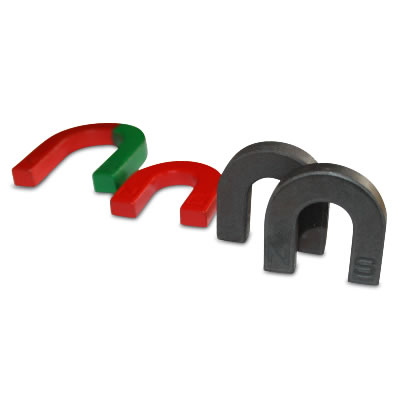

Magnet Shape: Horseshoe / U-Shaped
Material: Hard Ferrite (Ceramic)
Coating: Red and Green (Blue) / No Coating
Grade(Chinese Stardard): Y28
Detailed magnetic properties data:
Residual Magnetic Flux Density (Br): 3.7-4.0 KGs (mT): 370-400 mT
Intrinsic Coercivity Force (Hcj): 2.20-3.64 KOe 175-210 KA/m
Coercivity Force (Hcb): 2.26-2.76 KOe 180-220 KA/m
Energy Density (BH)max: 3.3-3.8 MGOe 26.0-30.0 KJ/m³
Operating Temperature: -40 °C to +250 °C
Magnetisation Direction: Axial / Radially magnetized
Size (Can be customized according to customer drawings):
L1, L2, W, H, T(mm), Please look image of measurement.
Tolerance: +/-2% mm
Delivery time 7-25 days
Measurements
Loss of adhesive force
Neither ferrite nor neodymium magnets lose their magnetisation by itself. They can only be demagnetised by external factors like heat or strong external magnetic fields.
Standard tolerances
Neodymium magnets generally have a tolerance of +/- 0,1 mm.
It's more complicated with ferrite magnets: Their height-related standard tolerance is +/- 0,1 mm; their width- and length-related tolerance is 2%, but at least 0,1 mm.
Transport
Smaller ferrite magnets have a rather weak magnetic field and can be shielded quite easily. It requires much more effort to shield neodymium magnets in order to send them.
Ferrite and neodymium magnets should always be transported at a distance of at least 22 mm (we recommend 30 mm). Otherwise, neodymium magnets can demagnetise or even reverse the polarity of ferrite magnets (see table below).
Coercive field
Stronger neodymium magnets have the power to demagnetise or even reverse the polarity of ferrite magnets (see table below).
